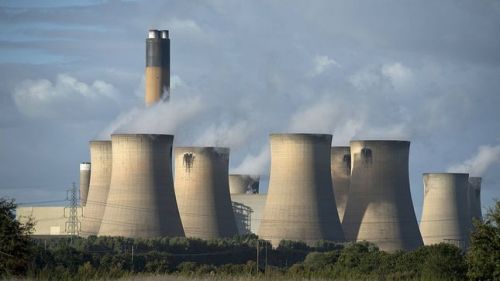本文转载自《The Hill》杂志发表的题为“US leads new wave of carbon capture and storage deployment”的文章。
日期:2020.01.05
作者:BRAD PAGE, 澳大利亚全球碳捕集与封存研究院总裁
原文链接:https://thehill.com/opinion/energy-environment/476783-us-leads-new-wave-of-carbon-capture-and-storage-deployment?amp=&from=singlemessage

GETTY IMAGES
As we ring in the new decade, it has become ever more apparent that the next ten years will be crucial to leaping on decarbonization efforts. Time is not on our side. We cannot favor one technology over another. An all-of-the-above approach is necessary. Carbon capture and storage (CCS) technologies must be part of the portfolio of solutions to decrease emissions from energy-intensive sectors and existing infrastructure, as well as remove CO2 already present in the atmosphere.
随着我们进入新的十年,越来越明显的是,未来十年对于加快脱碳工作至关重要。 时间不在我们这边。 我们不能偏爱一种技术而不是另一种。 必须采用上述所有方法。 碳捕集与封存(CCS)技术必须成为解决方案组合的一部分,以减少能源密集型部门和现有基础设施的排放,并清除大气中已经存在的二氧化碳。
CCS has long been recognized as necessary to address climate change, yet its scale-up has been lagging. A new report by the Global CCS Institute on the global status of CCS in 2019 shows that the tide is turning. The next wave of CCS facilities is well underway, with U.S. paving the way for the deployment of several new innovative CCS projects.
长期以来,人们一直认为CCS是解决气候变化所必需的,但CCS的推广一直滞后。 全球CCS研究所关于2019年CCS全球地位的最新报告显示,这一趋势正在扭转。 CCS设施的下一波发展正在进行中,美国为部署几个新的创新CCS项目铺平了道路。
There are now 19 large-scale CCS in operation globally, four under construction, and 28 in various stages of development. The facilities pipeline has replenished over the past 24 months, with close to 100 million tonnes of CO2 annual capture capacity.
目前,全球共有19个大型CCS在运营,其中4个在建,而28个处于不同的开发阶段。 过去24个月,设施管道得到了补充,年捕集二氧化碳能力接近1亿吨。
The U.S., already home to 10 large-scale facilities capturing more than 25 mtpa of CO2, is the global leader on CCS deployment. The Global CCS Institute recently added 10 facilities to its database, eight of which are in the U.S., and were driven by sustained government support. Notably by the 45Q tax credit - the most progressive CCS specific incentive globally - and further supportive mechanisms on the state level.
美国已经拥有10座大型设施,可捕获超过2500万吨/年的二氧化碳,是CCS部署的全球领导者。 全球CCS研究所最近在其数据库中添加了10个设施,其中8个在美国,并且受到了政府的持续支持。 特别是45季度税收抵免-全球最先进的CCS特定激励措施-以及州一级的进一步支持机制。
The U.S. Department of Energy also selected nine facilities for Front-End Engineering Design (FEED) study support. Industry sources say that more than two dozen facilities could potentially be announced once the Internal Revenue Service finalizes the guidance and rule for the 45Q tax credit.
美国能源部还选择了9个设施进行前端工程设计(FEED)研究支持。 业内消息人士称,一旦美国国税局(Internal Revenue Service)最终确定了45Q税收抵免的指南和规则,就有可能宣布超过二十家工厂。
The U.S. facilities exemplify essential trends of the next wave of CCS. These include hubs and clusters, natural gas power generation with CCS, and direct air capture. The next wave of CCS facilities is being built, in part, as hubs and clusters linking multiple sources of CO2 to shared infrastructure to transport and store CO2.
美国工厂体现了下一轮CCS的基本趋势。 其中包括枢纽和集群,使用CCS的天然气发电以及直接空气收集。 下一轮CCS设施的建设,部分是作为将多个CO2来源连接到共享基础设施以运输和存储CO2的枢纽和集群。
Taking advantage of clustered power and industrial facilities, these projects significantly reduce the unit cost of CO2 storage through economies of scale. Allowing each project to focus on its core strengths also reduces risk.
这些项目利用集群式电力和工业设施的优势,通过规模经济显着降低了二氧化碳封存的单位成本。 让每个项目专注于其核心优势也可以降低风险。
The Department of Energy's Carbon Storage Assurance Facility Enterprise Initiative - also known as CarbonSAFE - which focuses on developing geologic storage for 50 million tonnes and more, is already showing the first signs of success. In the U.S., six of the eight facilities added to the Global CCS Institute's database are part of the program.
能源部的碳储存保证设施企业计划-也称为CarbonSAFE-致力于开发5000万吨及以上的地质储存,已经显示出成功的最初迹象。 在美国,添加到全球CCS研究所数据库中的八个设施中的六个是该计划的一部分。
Earlier this year, an ammonia plant with near-zero CO2 emissions using a repurposed integrated gasification combined cycle (IGCC) plant with CCS was announced in Indiana. The facility is expected to capture 1.5 to 1.75 Mtpa CO2 for dedicated geological storage in the Wabash CarbonSAFE CO2 storage hub. The project also benefits from 45Q.
今年早些时候,在印第安纳州宣布了使用改建的带有CCS的综合气化联合循环(IGCC)工厂的CO2排放接近零的氨工厂。 预计该设施将捕获1.5至1.75 百万吨年捕集CO2量,以便在Wabash CarbonSAFE CO2储存中心进行专门的地质存储。 该项目还受益于45Q。
To achieve net-zero, mitigating emissions will not be sufficient. Removing CO2 from the atmosphere will be needed, and the deployment of negative emissions technologies is gaining traction.
要实现净零排放,减少排放是不够的。 将需要从大气中除去二氧化碳,并且负排放技术的部署正日益受到人们的关注。
California, through its Low Carbon Fuel Standard CCS Protocol, which took effect earlier this year, is incentivizing direct air capture facilities globally. Driven by this policy, Occidental Petroleum announced the first large-scale direct air capture facility in Texas, aiming to capture more than one mtpa of CO2 from the atmosphere.
加利福尼亚州通过今年初生效的《低碳燃料标准CCS协议》,正在激励全球范围内的直接空气收集设施。 在这项政策的推动下,西方石油宣布在得克萨斯州建立了第一家大型直接空气捕获设施,旨在从大气中捕获超过一百万吨的二氧化碳。
Innovators are also working on the next generation of technologies. The Allam Cycle aims to be cost-competitive with conventional combined-cycle natural gas plants while also capturing 99 percent of CO2. Several of the facilities selected within DOE's FEED-study support include retrofitting natural gas-fired power plants with CCS. With natural gas being the fastest-growing fuel in 2018, and not a single natural gas power plant equipped with CCS globally, this is a welcome development.
创新者还致力于下一代技术。 Allam循环旨在与传统的联合循环天然气工厂在成本上具有竞争力,同时还能捕获99%的CO2。 DOE的FEED研究支持中选择的几种设施包括使用CCS改造天然气发电厂。 天然气是2018年增长最快的燃料,而全球没有一家配备CCS的天然气发电厂,这是一个可喜的发展。
CCS deployment in the U.S. is underpinned by policy action both on the federal and state level. In addition to 45Q and the LCFS CCS Protocol, several other policy initiatives are underway. In Congress, multiple CCS-supportive bills have been introduced, including proposing important additional financing mechanisms and catalyzing CO2 infrastructure development.
美国的CCS部署受到联邦和州级政策行动的支持。 除了45Q和LCFS CCS协议之外,其他多项政策计划也在实施中。 在国会,提出了多项支持CCS的法案,包括提出重要的额外融资机制并促进CO2基础设施的发展。
In California, CCS is being put forward as an essential technology to support the state's decarbonization goals in all three sectors of emissions. Several states, including Montana, Louisiana, Texas, and North Dakota, provide tax incentives for CCS deployment, while others like Wyoming are aiming to progress on the technology substantially.
在加利福尼亚州,CCS正在作为一项重要技术提出,以支持该州在所有三个排放领域的脱碳目标。 蒙大拿州,路易斯安那州,得克萨斯州和北达科他州等几个州为CCS的部署提供税收优惠,而怀俄明州等其他州则希望在技术上取得实质性进展。
The tide has turned, the next wave of CCS facilities is now well underway. Yet we cannot afford to rest on these positive developments. The International Energy Agency recently updated its Sustainable Development Scenario. CCS now provides nine percent of cumulative emissions reduction through 2050. It shows that more than 2000 facilities need to be operation by 2040. Reaching climate goals means an urgent scale-up of at least 100-fold.
潮流已经扭转,下一轮CCS设施的建设正在进行中。 然而,我们不能依靠这些积极的事态发展。 国际能源署最近更新了其可持续发展方案。 CCS现在提供了到2050年累计减排量的9%。这表明,到2040年,将需要运营2000多个设施。达到气候目标意味着至少需要将其规模扩大至少100倍。
With 2019 going down in history as one of the hottest years on earth, CCS deployment in the 2020s is more urgent than ever.
由于2019年是地球上最热的年份之一,因此历史上最糟糕的是,2020年代CCS的部署比以往任何时候都更为紧迫。